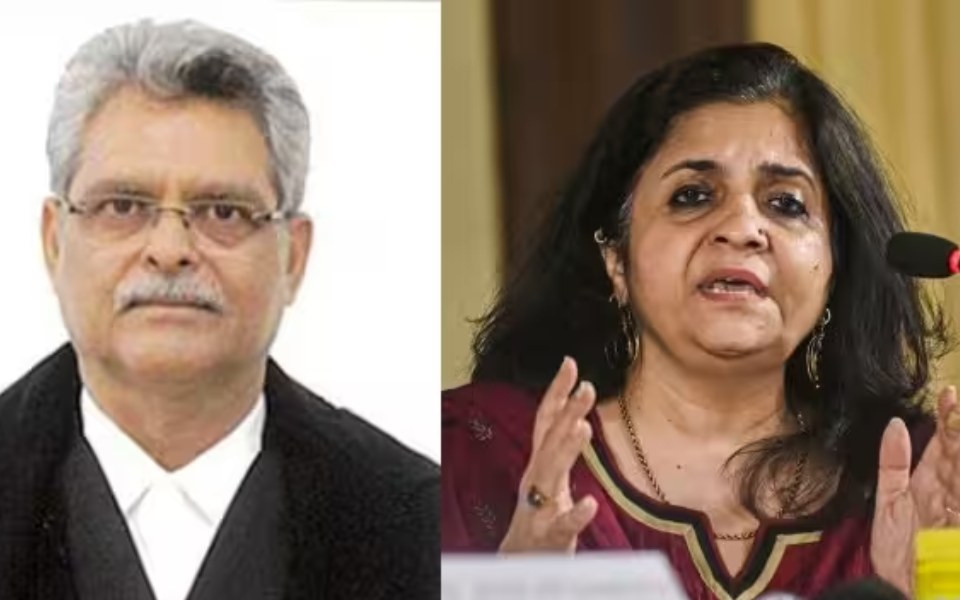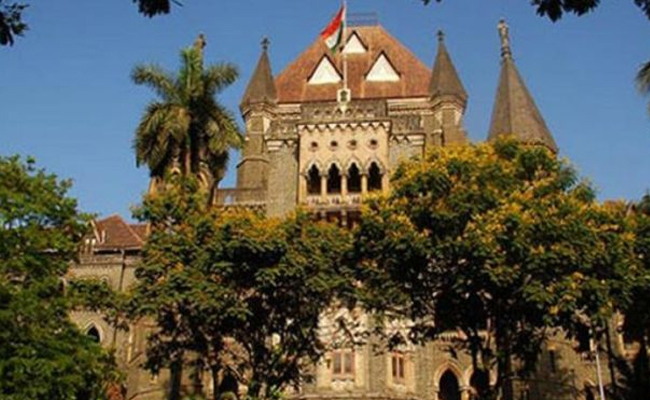Ahmedabad, Aug 3: Justice Samir Dave of the Gujarat High Court on Thursday recused himself from hearing a plea filed by social activist Teesta Setalvad seeking quashing of an FIR filed against her by the Ahmedabad crime branch for allegedly fabricating evidence in the 2002 riots cases.
When the matter came up for hearing, Justice Dave said, "Not before me."
Now, the chief justice of the high court will allot the case to a new judge.
Last month, a sessions court had rejected Setalvad's discharge plea in the case, even as the Supreme Court granted her bail after the Gujarat High Court denied relief to her.
She then moved a plea seeking quashing of the FIR in the Gujarat High Court.
Setalvad and two others - former state Director General of Police R B Sreekumar and former Indian Police Service officer Sanjiv Bhatt - were arrested by the city crime branch in June 2022 on charges of forgery and fabricating evidence with the intent to implicate the Gujarat government functionaries in the 2002 riots cases.
A first information report (FIR) was registered against them after the Supreme Court last month dismissed the plea filed by Zakia Jafri, whose husband and former Congress MP Ehsan Jafri was killed during the riots.
Setalvad was booked under sections 468 (forgery for purpose of cheating) and 194 (giving or fabricating false evidence with intent to procure conviction for capital offence) of the Indian Penal Code (IPC), among others.
The state government, during a hearing in the sessions court earlier, had alleged that Setalvad drafted affidavits in the names of victims to implicate innocent persons including the then chief minister (now Prime Minister Narendra Modi), senior officers, and ministers.
Zakia Jafri's plea alleged a "larger conspiracy" behind the 2002 post-Godhra riots in Gujarat involving the then chief minister Narendra Modi. The court upheld the SIT's clean chit to Modi and 63 others.
In its judgment, the Supreme Court observed, "At the end of the day, it appears to us that a coalesced effort of the disgruntled officials of the State of Gujarat along with others was to create sensation by making revelations which were false to their own knowledge."
"The falsity of their claims had been fully exposed by the SIT after a thorough investigation...As a matter of fact, all those involved in such abuse of process need to be in the dock and proceed in accordance with law."
Ehsan Jafri was among the 68 people killed at Ahmedabad's Gulberg Society during violence on February 28, 2002, a day after the Godhra train burning that claimed 59 lives.
The riots that it triggered killed 1,044 people, mostly Muslims. Giving details, the Central government informed the Rajya Sabha in May 2005 that 254 Hindus and 790 Muslims were killed in the post-Godhra riots.
Let the Truth be known. If you read VB and like VB, please be a VB Supporter and Help us deliver the Truth to one and all.
Panaji (PTI): The Bombay High Court on Monday converted a civil suit against Birch by Romeo Lane nightclub into a Public Interest Litigation (PIL) saying "someone has to be held accountable" for the tragedy in which 25 people were killed.In a stern observation, Goa bench of the High Court of Justices Sarang Kotwal and Ashish Chavan said the local panchayat had "failed to take suo motu cognisance" of the club and had taken "no action despite complaints."
The division bench directed the Goa government to file a detailed reply on the permissions granted to the nightclub.
The High Court, while fixing January 8 as the next date of hearing, pointed out that commercial operations were continuing in the structure despite it having been served a demolition order.
The original petition was filed after the December 6 tragedy by Pradeep Ghadi Amonkar and Sunil Divkar, the owners of the land on which the nightclub was operating.
ALSO READ: Veteran Congress leader Shamanuru Shivashankarappa laid to rest with full state honours
Advocate Rohit Bras de Sa, the lawyer representing the petitioner, was made amicus curiae in the matter and has been asked to file a detailed affidavit in the matter.
In their petition, Amonkar and Divkar highlighted "the alarming pattern of statutory violations that have remained inadequately addressed despite multiple complaints, inspections, show-cause notices, and even a demolition order".
They contended that these violations posed "immediate threats to public safety, ecological integrity, and the rule of law in the state of Goa."
Investigations by multiple agencies into the nightclub fire have revealed various irregularities, including lack of permissions to operate the nightclub.
The Goa police arrested five managers and staff members of the club, while co-owners Gaurav Luthra and Saurabh Luthra have been detained in Thailand after they fled the country.





